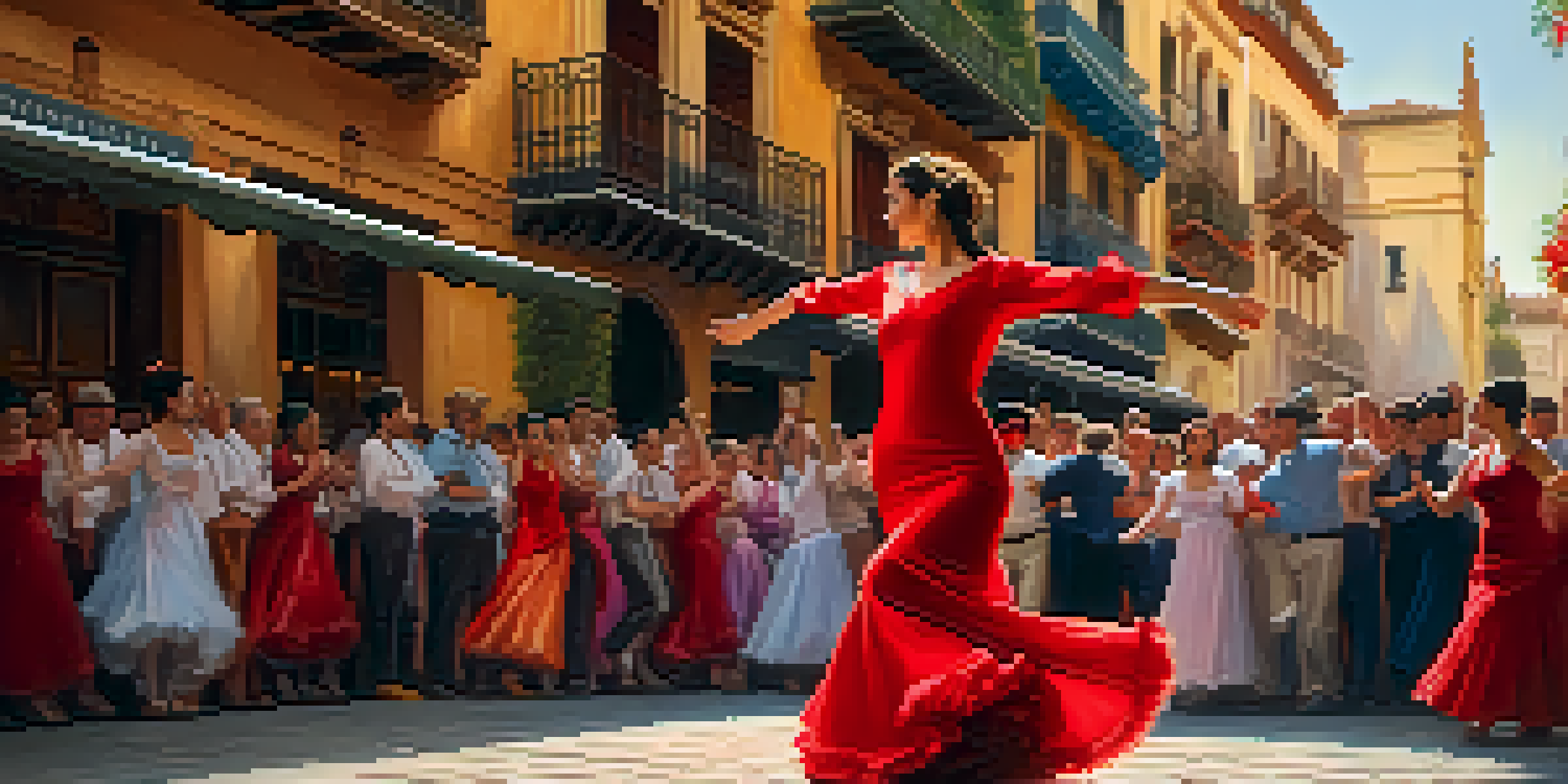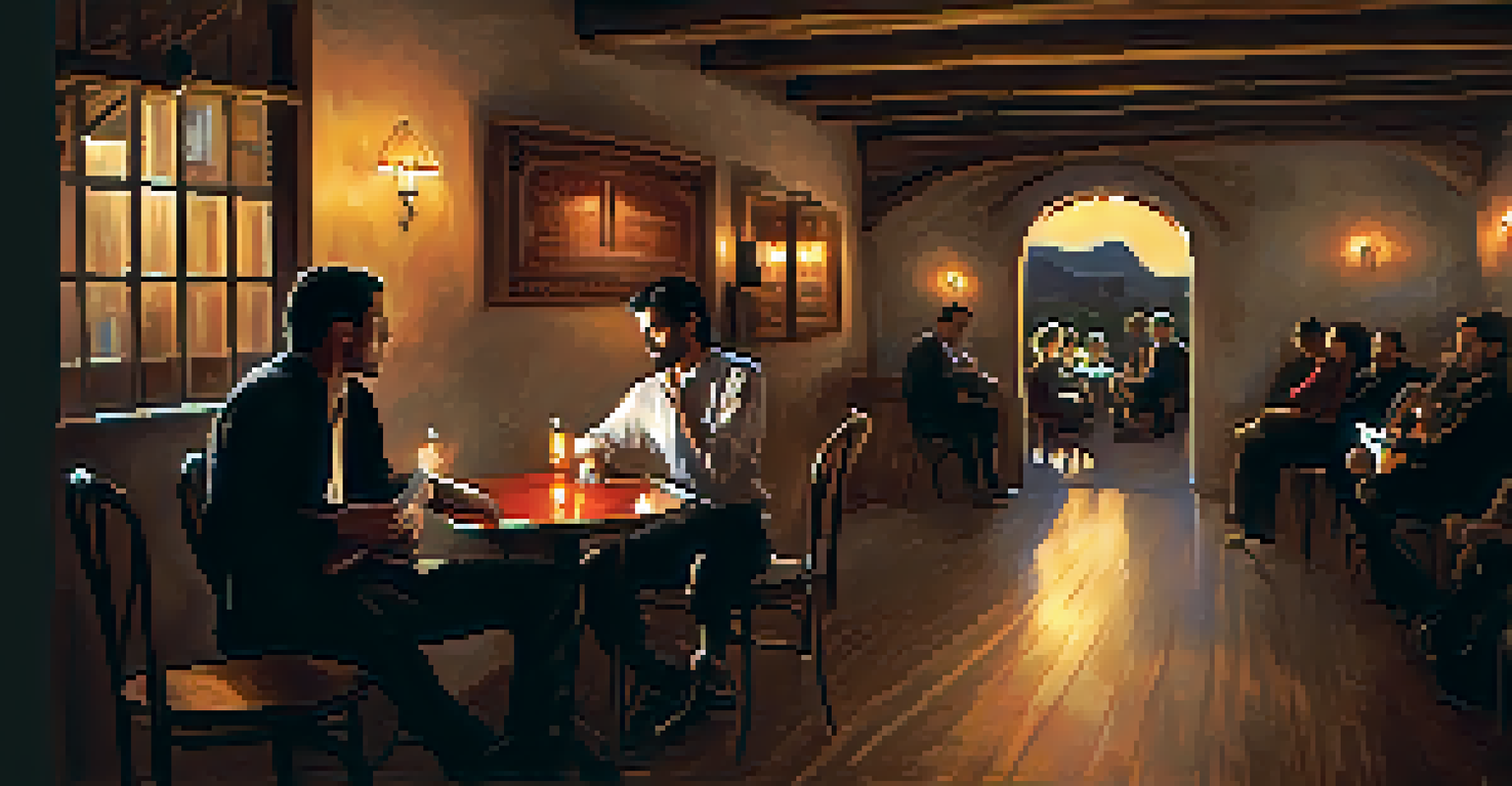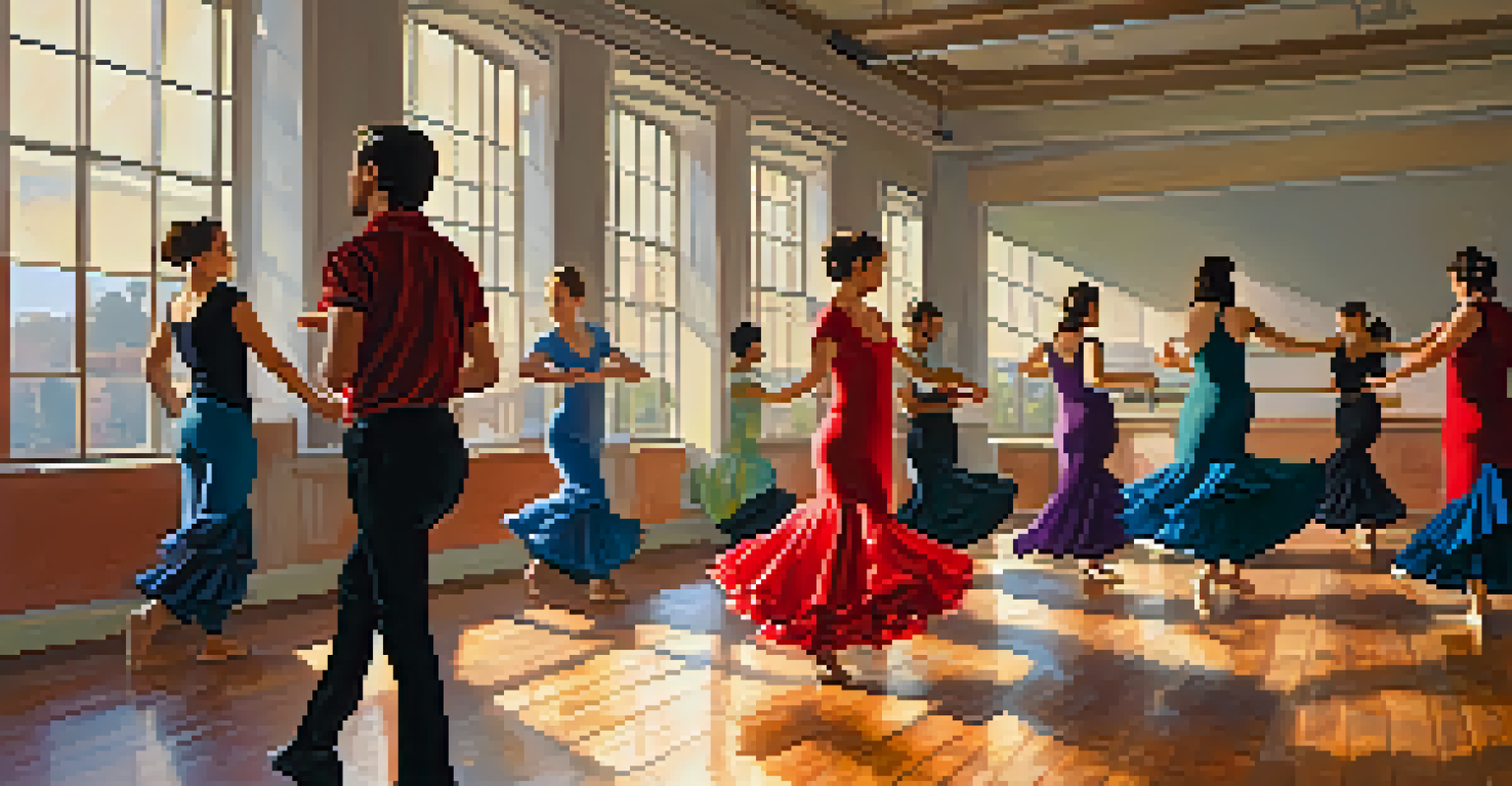Flamenco in Seville: The Heart of Spain’s Flamenco Scene

Seville: The Birthplace of Flamenco
Seville is often regarded as the heart and soul of Flamenco, a passionate art form that combines singing, guitar playing, and intricate dancing. Rooted in the traditions of the Andalusian people, Flamenco has evolved over centuries, drawing influences from various cultures. Walking through the streets of Seville, you can almost feel the rhythm of this vibrant culture pulsating in the air.
Flamenco is the expression of the soul, a language that transcends words.
Every corner of Seville has a Flamenco story to tell, whether it’s a street performer showcasing their talent or a lively tablao (Flamenco venue) filled with energy. The city’s rich history, combined with its unique blend of Romani, Moorish, and Spanish influences, creates an environment where Flamenco thrives. For anyone visiting, experiencing Flamenco in its birthplace is nothing short of magical.
Moreover, the city's annual Flamenco festivals, like the Bienal de Flamenco, draw enthusiasts from all over the world. These events celebrate the art form and showcase its many styles, providing a platform for both seasoned artists and emerging talent. In essence, Seville isn’t just a backdrop; it’s an essential character in the Flamenco narrative.
The Elements of Flamenco: More Than Just Dance
Flamenco is a multi-faceted art form that includes singing (cante), guitar (toque), and dancing (baile). Each element plays a crucial role in conveying the deep emotions that define Flamenco. The passion of the singer’s voice, the intricate strumming of the guitar, and the powerful footwork of the dancer come together to create a mesmerizing experience.

The dance itself is a form of storytelling, with each movement expressing feelings of joy, sorrow, or longing. Dancers use their entire body to convey these emotions, with footwork that varies from gentle to thunderous. This dynamic range makes each performance unique and captivating, drawing audiences into the world of the dancer.
Flamenco: A Cultural Heartbeat
Seville is the vibrant birthplace of Flamenco, where its rich traditions and passionate performances create an enchanting cultural landscape.
Additionally, the improvisational nature of Flamenco means that no two performances are ever the same. This spontaneity adds an element of excitement, as performers respond to each other and the energy of the audience. It’s this blend of structure and freedom that makes Flamenco such a compelling art form.
Flamenco in Everyday Life: A Cultural Tradition
In Seville, Flamenco is not confined to stages and festivals; it permeates everyday life. Many locals grow up surrounded by its sounds and rhythms, often participating in family gatherings where Flamenco music is played. These informal celebrations help keep the tradition alive, passing it down through generations.
Through Flamenco, we discover our roots and transform our emotions into art.
Local residents often share stories of their childhoods filled with Flamenco, whether it’s learning to dance from a family member or listening to the guitar around a cozy table. This intimate connection creates a strong sense of community and belonging, as Flamenco becomes a shared identity for many Sevillanos.
Even in modern times, Flamenco continues to evolve, incorporating new influences while staying true to its roots. Young artists blend traditional styles with contemporary music, ensuring that Flamenco remains relevant in today’s world. This adaptation reflects the resilience of the culture and its ability to resonate with new audiences.
The Best Places to Experience Flamenco in Seville
Seville boasts numerous venues where you can experience authentic Flamenco performances. From intimate bars to grand theaters, each location offers a unique atmosphere and style. One popular spot is Casa de la Memoria, known for its traditional performances in a cozy setting, perfect for an immersive experience.
For a more vibrant and lively atmosphere, venues like El Palacio Andaluz present grand Flamenco shows featuring some of the best dancers and musicians in the region. These larger productions often include elaborate costumes and storytelling, giving audiences a taste of the full spectrum of Flamenco artistry.
Elements of Flamenco Artistry
Flamenco is a captivating blend of singing, guitar, and dance that conveys deep emotions through its dynamic performances.
If you prefer a more hands-on experience, consider taking a Flamenco class. Many studios in Seville offer lessons for all skill levels, allowing you to learn the basic steps and rhythms of Flamenco dance. This personal engagement deepens your appreciation for the art form and connects you more profoundly to its cultural significance.
The Influence of Flamenco on Global Culture
Flamenco has not only shaped the cultural landscape of Spain but has also made its mark on the global stage. Its passionate rhythms and emotive performances have inspired artists worldwide, from musicians to dancers. This cross-cultural influence highlights the universal language of music and movement, transcending borders.
In recent years, Flamenco has been embraced by various genres, from jazz to pop, creating innovative fusions that introduce the art form to new audiences. Artists like Paco de Lucía have successfully blended Flamenco with other musical styles, showcasing its versatility and relevance in contemporary music.
Moreover, festivals and events dedicated to Flamenco are held around the world, celebrating its rich tradition and encouraging intercultural exchange. This growing interest helps ensure that Flamenco continues to thrive, evolving while honoring its storied past.
Learning Flamenco: A Journey of Self-Expression
For many, learning Flamenco is more than just mastering dance steps; it’s a journey of self-expression and personal growth. The art form allows individuals to explore their emotions and creativity, fostering a deep connection to the music and movement. This transformative experience can be quite empowering, as learners embrace their unique style.
Flamenco classes often emphasize the importance of understanding its cultural context, encouraging students to appreciate the stories behind the movements. This holistic approach enriches the learning experience, making it more meaningful and impactful. Instructors often share their personal connections to the art form, creating a sense of camaraderie among students.
Flamenco's Global Influence
The passionate rhythms of Flamenco have transcended borders, inspiring artists worldwide and fostering innovative fusions with various music genres.
As students progress, they not only improve their technical skills but also gain confidence and a sense of belonging within the Flamenco community. This supportive environment fosters friendships and connections that can last a lifetime, making the journey of learning Flamenco truly rewarding.
The Future of Flamenco: Tradition Meets Innovation
As Flamenco continues to evolve, the future of this vibrant art form looks promising. New generations of artists are finding innovative ways to blend traditional Flamenco with modern influences, ensuring that it resonates with today's audiences. This fusion keeps the art form fresh and exciting, inviting participation from diverse backgrounds.
Furthermore, the rise of digital platforms has allowed Flamenco to reach a broader audience. Online performances, tutorials, and social media challenges are making Flamenco more accessible than ever, sparking interest from young people around the globe. This digital engagement helps cultivate a new appreciation for the art form, bridging the gap between tradition and contemporary culture.

Ultimately, the essence of Flamenco—its ability to express deep emotions and foster connections—remains unchanged. As artists continue to push boundaries while honoring their heritage, Flamenco is poised to thrive in an ever-changing world, captivating hearts for generations to come.